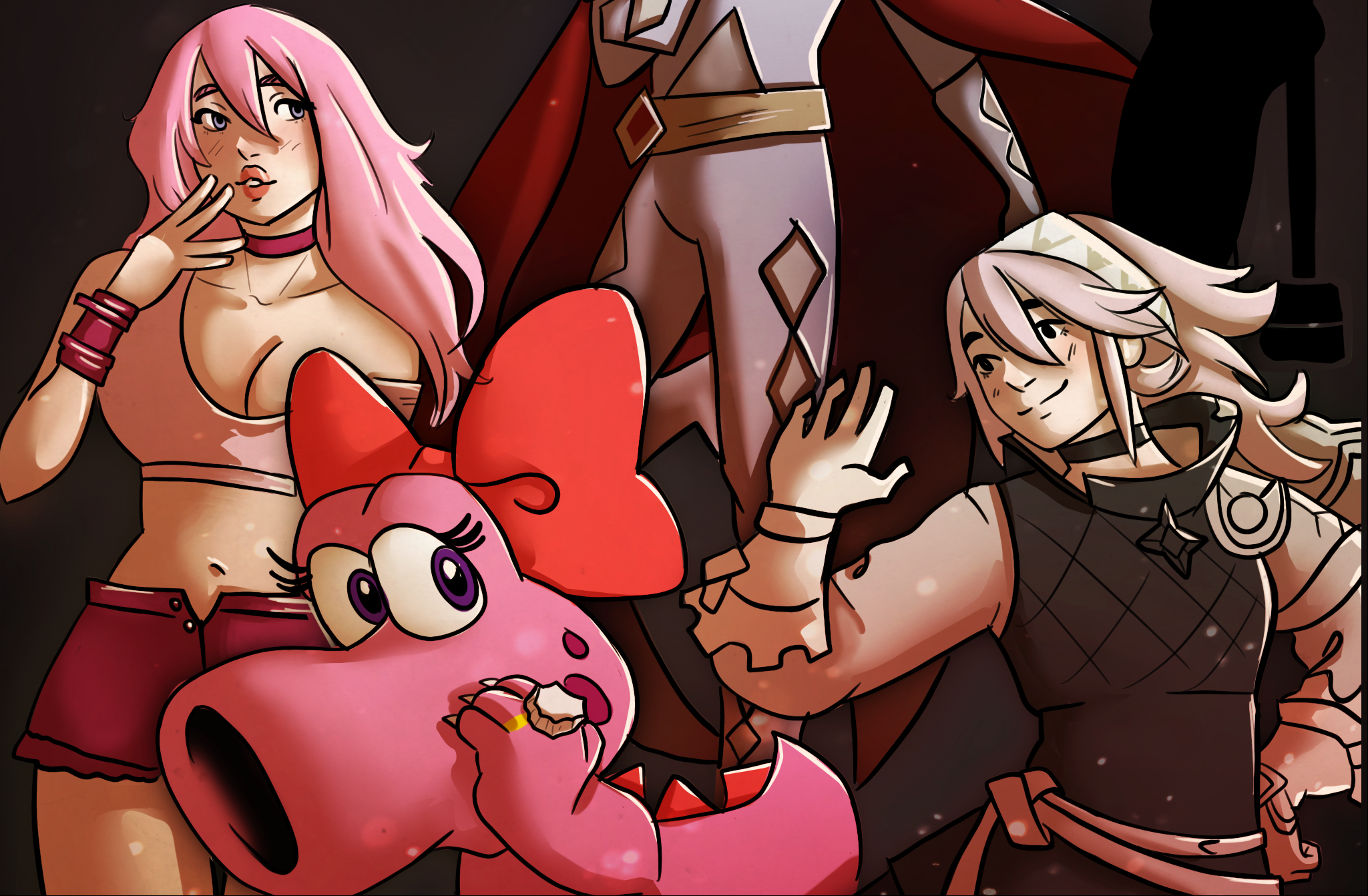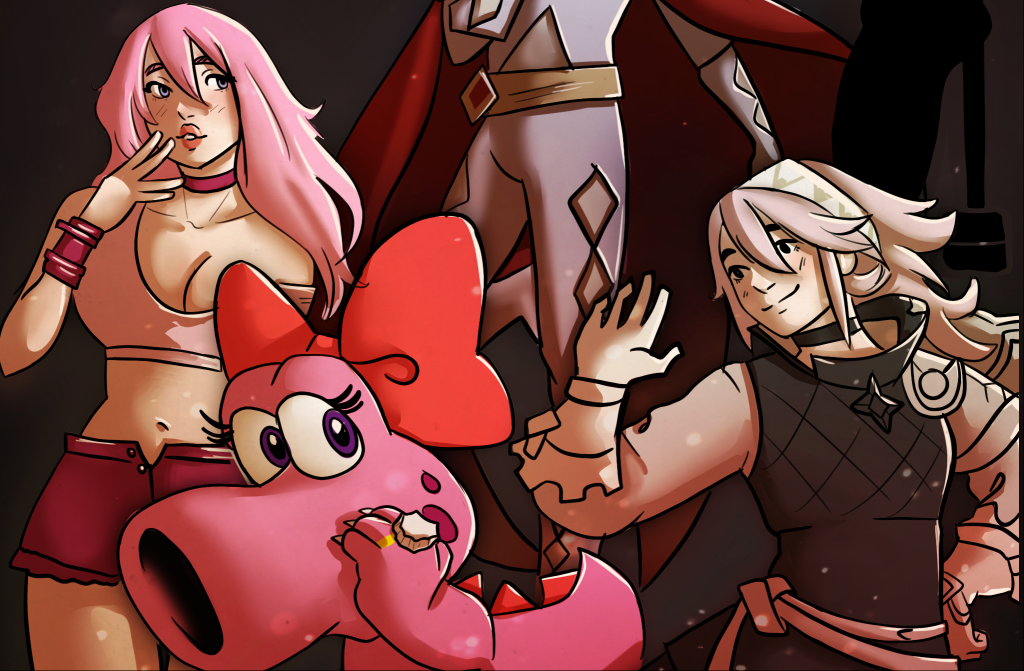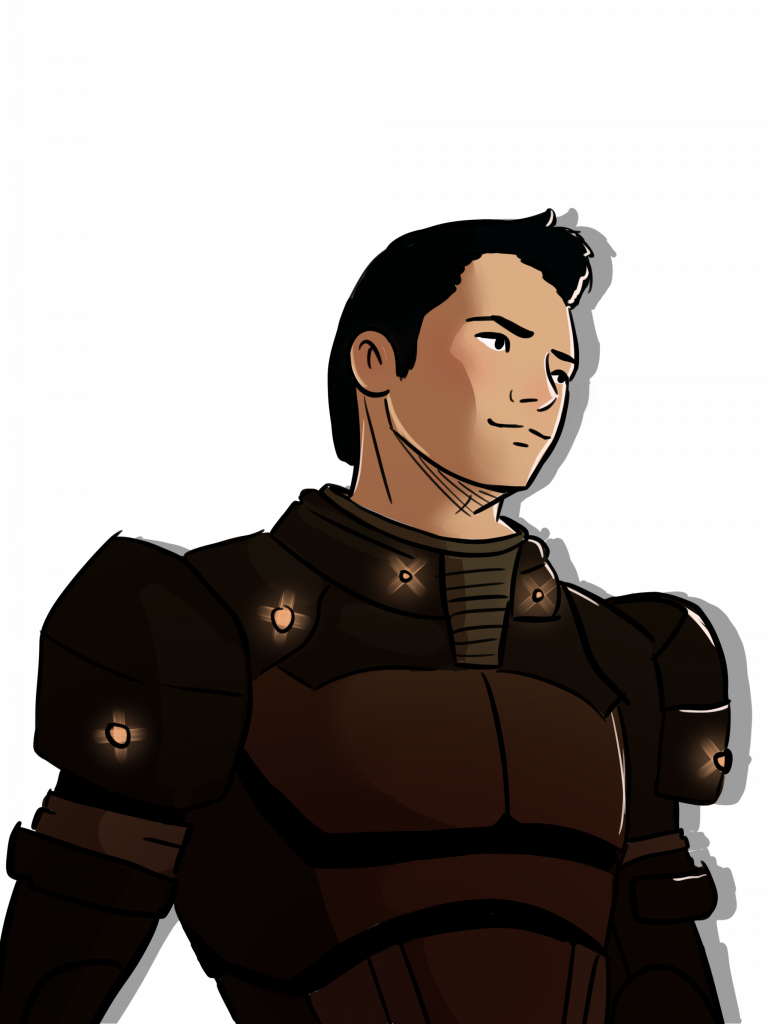

An argument I often have with my straight friends is about the true sexuality of Kanji Tatsumi, a character from the popular JRPG Persona 4. I argue that he is bisexual, because throughout the game he experiences attraction to another character, Naoto Shirogane, who presents as both male and female. On several occasions he feels conflicted over being attracted to Naoto while presenting as male, and continues to show attraction to Naoto even when they begin presenting as female. Kanji also has a whole level dedicated to his “shadow self,” which expresses his repressed queer feelings. His shadow self manifests in a bath house where he seeks a “hot encounter” with other men. Shadow Kanji is clearly meant to be a stereotypical version of a gay man: he speaks effeminately and his dialogue is filled with innuendo and coded language (for example, at one point he says he has “penetrated the facility”). It’s important to note that Shadow Kanji is meant to be a gross, overblown manifestation of his inner thoughts. Still, from the moments we have with Shadow Kanji to the player character’s continued interactions with the real Kanji, an arc develops that shows a man coming to terms with his more effeminate qualities and queerness. At the end of Kanji’s arc, he even admits that this shadow self is just as much a part of him as his real-world self.
For me, this moment alone confirms Kanji’s queerness. However, if you were to ask my straight friends, they would tell you that his story is only about a man accepting that he has both masculine and feminine qualities, which doesn’t necessarily make him queer. That’s okay; they likely aren’t going to be able to decipher the queer coding that comes with Kanji’s character because they themselves are not queer. As a gay man, it’s easier for me to see my own experiences reflected in Kanji’s character arc, which is a perspective that my straight friends simply don’t have. This is why it is so important to effectively voice queer coding in video games in a culture that does not default to writing queer leads — it normalizes conversations about sexuality in video games and paves the way for more explicit forms of queer representation.

In broad terms, queer coding occurs when a story never explicitly states that a character is queer, but said character physically presents or behaves in stereotypically queer ways. A great example of this in a video game is Ghirahim, Link’s main antagonist in The Legend of Zelda: Skyward Sword. Carolyn Petit of Feminist Frequency describes how Ghirahim’s flamboyant fashion and personality are examples of sterotypes that we rely on in order to label a character as queer. When compared to other Zelda villains like Ganon, who is normally presented as a large, brooding man and/or pig, Ghirahim poses a stark contrast; his sleek, high-fashion aesthetic is reminiscent of modern, effeminate men. In interactions with Link, Ghirahim is sexually forward, suggestively licking his lips and getting up close and personal with Link — not unlike Shadow Kanji. Even though my understanding of queerness was fairly vague when I first played Skyward Sword, I could still feel that Ghirahim was on some level meant to be seen as queer, even if it was never explicitly stated.
Queer coding, however, is only a small subset of queer representation in video games, which has a complex and problematic history. The first example of queer representation was a murder-mystery game called Caper in the Castro, a CharityWare game developed to raise funds for AIDS victims. The game was ahead of its time, featuring multiple queer protagonists. However, when Caper in the Castro was redeveloped for a wider release, the genders of several protagonists were changed, and they were assumed to be straight and cisgender. In the early years of video games, this is about as far as queer representation went; any other examples of queerness were relegated to background NPCs or throwaway dialogue. One example is Birdo from the Super Mario franchise, who was originally described in the Super Mario Bros. 2 manual as a boy who thinks he is a girl. The character was initially meant as a gag about men who crossdress, but later games pivoted to describing Birdo as a genderqueer character who is outside of the gender binary. Birdo, however, is not the only character who has been used to make a joke of trans and genderqueer people. Poison, from the Final Fight and Street Fighter franchises, is widely regarded as one of the first trans characters in gaming despite her problematic origins. Poison was originally a cisgender woman who was retconned to be a trans woman due to concerns over depicting violence against women. Though Poison’s identity has gone back and forth over the years, fans have pushed to officially recognize her as a trans woman.
In the ’90s, video game characters in general started to take on hypersexualized appearances and attitudes. This trend was also seen in queer characters, especially those presented as female. During this time, most queer characters were lesbian women who were either presented as hypersexualized or would eventually decide to have sex with the male protagonist. Controversies over how queer characters were displayed arose because of advertisements like those for Fear Effect, which portrayed two female leads wearing little to no clothing in sexually suggestive positions. More adult-oriented games like Leisure Suit Larry would feature lesbian couples who would eventually be seduced into threesomes. Other queer characters during this time moslty fell prey to the trope of being a background character who is only in the game as a joke.
A small step in the right direction came from the introduction of queer romance options in BioWare games like Mass Effect. These games, however, didn’t come without controversy, as many fans accused developers of making characters “playersexual,” or making them a romanceable option in a game regardless of the main character’s gender and with no explicit statement of queer elements within the game. For example, Caden, the male romantic option in Mass Effect, can be romantically interacted with whether you play the game as a male or female character. Making characters playersexual is seen as throwing the queer community a bone while still pandering to straight players. In recent years, though, the industry at large has successfully begun to shift to stronger, more complex representations of queerness in gaming. Characters like Ellie from The Last of Us and Tracer from Overwatch — complex queer women who aren’t presented as set pieces, jokes, or fantasy-fulfillment — have become the shining examples of how far we’ve come.
A question I get a lot during my arguments over Kanji’s queerness is: Why does it matter? Kanji isn’t even a real person, he’s a video game character! It matters because media like video games have become such an integral part of so many people’s lives that representation on-screen generalizes to our everyday lives. If the only examples of gay men that straight people see in video games are hyper-feminine, sexually predatory, leatherclad men, it could result in them assuming this is the way all gay men behave.
Another danger that arises from a lack of queer representation in video games is a reinforcement of toxic stereotypes about sexuality. The best example of this is the controversy over the character of Soleil in Fire Emblem: Fates. Soleil could have been a great example of a queer woman in a game. She gets flustered around cute girls, and her attraction to women is never an issue. However, this entire aspect of her story crumbles when the player realizes that she cannot be in a romantic relationship with any other female character in the game. Adding to the disappointment is a support conversation with the male main character in which he helps her overcome her shyness around girls by having her visualize him as a woman. Through repetition of this visualization, she ends up falling in love with him. In the original Japanese release, Soleil is essentially drugged by the male main character to make her see him as a woman, which causes Soleil to find herself attracted to him as a woman, which leads to her falling in love with him as a man. In the U.S. release, this interaction was changed so Soleil is depicted more as bisexual, but the player is still not given the ability to pair her up with any other female character, which effectively erases her queerness. The danger that comes from this is the reinforcement of the idea that queer women just haven’t met the right man and that men should be aggressive in pursuing queer women.

Another danger comes in a far more nefarious form: a total ignorance and erasure of queerness. I see no better example than the 2014 Nintendo title, Tomodachi Life. In this life simulator, players take control of Miis, avatars of themselves, others they know, or characters they created themselves. The Miis are able to interact in a variety of fun and engaging ways, including getting married and starting a family. However, a glaring issue for queer players was the inability for Miis to develop same-sex relationships. Nintendo even went out of its way to patch a glitch in the game that allowed male Miis to be re-gendered into female Miis. When more people began finding out about Nintendo’s decision to exclude same-sex couples from their game, Nintendo released an apology for the decision, saying that it was “not possible for [them] to change this game’s design.” The company did acknowledge their mistakes and promised that the company would better represent their same-sex audience in future Tomodachi Life games. It should also be noted that Nintendo has not made any indication there will be other Tomodachi Life titles.
So, is Kanji Tatsumi queer? There’s really no answer; the developers from ATLUS, the company that made Persona 4, have made no efforts to clarify Kanji’s sexuality. In fact, they have purposely kept Kanji’s sexuality ambiguous, which defeats the entire purpose of his character arc. However, this doesn’t negate the importance of writing and acknowledging queer coding. On the contrary, characters like Kanji are exactly why it’s so important to point out queer coding when it’s present. When operating within a predominantly straight culture, if we in the queer community don’t raise our voices, then we risk remaining unheard. That being said, queer coding is still only a first step to the process of normalizing queerness in video games. When developers become more aware of the queer gaming community, developers then begin to make characters that represent queer people better. David Gainer, a senior writer at BioWare, said it best: “By writing about romance and sex, [we] were inevitably saying something about what was acceptable and what was normal, and who we thought our audience was.” This is why having these conversations about the Kanjis and Ghirahims of gaming is so important. By normalizing queerness in games, we pave the way for queer characters that truly represent us.

Tanner Lewis (junior | criminology)
Just a collection of rats that developed a hive mind.
Comments